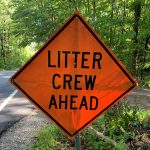
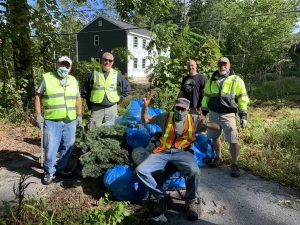
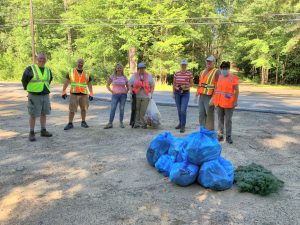 containers, and other litter that accumulates over the months from motorists tossing these items out their windows. This summer one volunteer even found a discarded artificial Christmas tree!
containers, and other litter that accumulates over the months from motorists tossing these items out their windows. This summer one volunteer even found a discarded artificial Christmas tree!

 containers, and other litter that accumulates over the months from motorists tossing these items out their windows. This summer one volunteer even found a discarded artificial Christmas tree!
containers, and other litter that accumulates over the months from motorists tossing these items out their windows. This summer one volunteer even found a discarded artificial Christmas tree!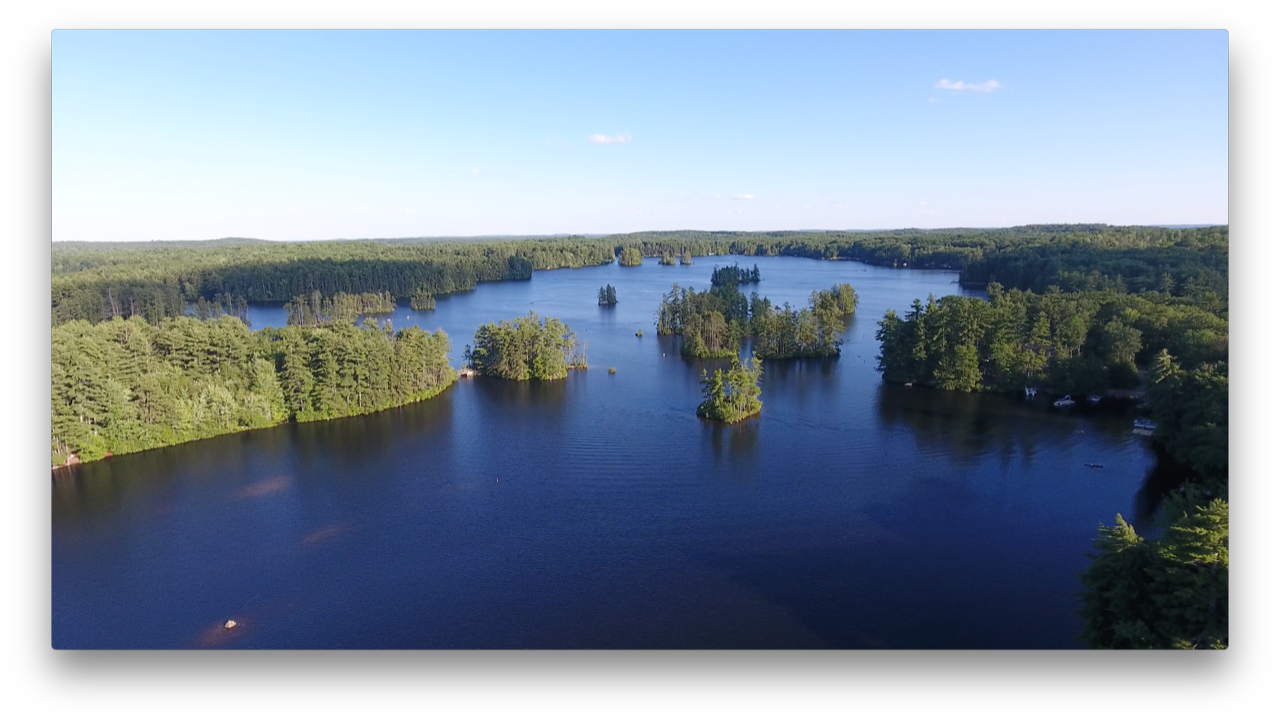

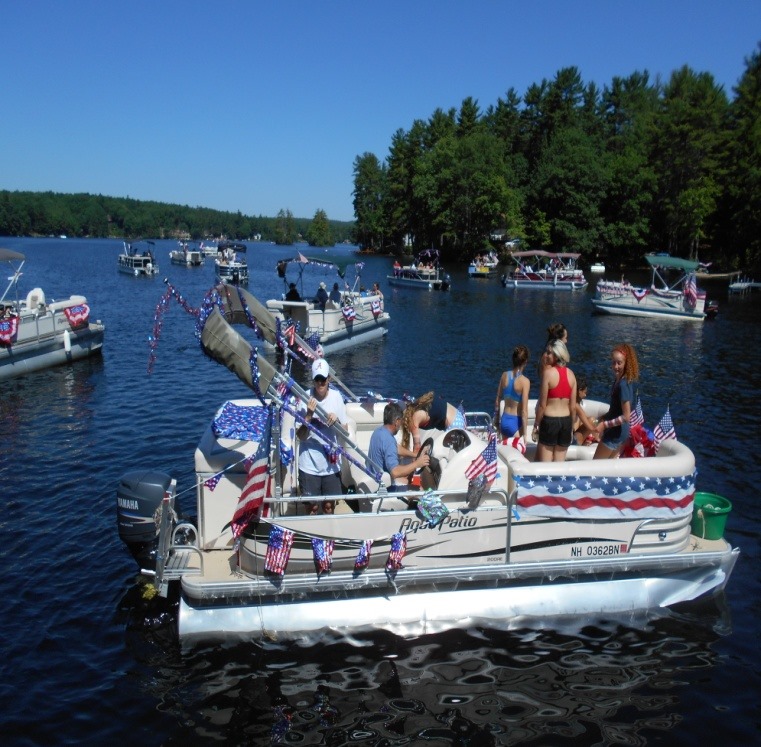
The PLIA is planning this year’s annual Independence Day Boat Parade with some precautions to accommodate distancing protocols and out of courtesy to others. Below are guidelines that will ensure the safety of all participants during coronavirus conditions, from the New Hampshire Fire Academy & Emergency Medical Services:

The date for the event is July 4, 2020; rain date July 5, 2020. Starting at 10:00 AM, all boats gather at the northern end of the lake by Twin Islands. At 10:30 AM, John Decker’s boat will lead the parade in its clockwise progress around the lake ending at the State Park beach.
Decorate your boat—and yourselves!—however your fancy takes you.
PLEASE, NO WATER BALLOONS!
So, what’s wrong with water balloons?
1. Water balloons can cause injuries and they hurt
2. Water balloons are harmful to wildlife
3. And there is the danger of potential virus contamination
 For these reasons, even if you personally love a good water balloon fight, please resist the temptation at least until after the boat parade, and keep it on land. Super soakers are the perfect alternative, but only with others similarly equipped. Not everyone welcomes the spray!
For these reasons, even if you personally love a good water balloon fight, please resist the temptation at least until after the boat parade, and keep it on land. Super soakers are the perfect alternative, but only with others similarly equipped. Not everyone welcomes the spray!
 Every Spring, we mail out printed versions of our newsletter, the PawPrints. This year, we have focused on the topic of invasive aquatic species because Variable Milfoil continues to threaten our lake.
Every Spring, we mail out printed versions of our newsletter, the PawPrints. This year, we have focused on the topic of invasive aquatic species because Variable Milfoil continues to threaten our lake.
 Sweep your driveway, walkways, and steps to remove leftover sand. Sand used to help keep roadways, driveways, and walkways passable during the icy and snowy winter months can cause serious problems when washed into waterbodies by spring rains. Sand deposited in aquatic environments can destroy fish spawning or nesting sites and sand particles suspended in the water can clog fish gills. Deposited sand also causes waterbodies to become shallower, often facilitating plant and algal growth-while having some plants and algae in a lake is a good thing, too much of either is not good for the health of the lake, or our enjoyment of the lake.
Sweep your driveway, walkways, and steps to remove leftover sand. Sand used to help keep roadways, driveways, and walkways passable during the icy and snowy winter months can cause serious problems when washed into waterbodies by spring rains. Sand deposited in aquatic environments can destroy fish spawning or nesting sites and sand particles suspended in the water can clog fish gills. Deposited sand also causes waterbodies to become shallower, often facilitating plant and algal growth-while having some plants and algae in a lake is a good thing, too much of either is not good for the health of the lake, or our enjoyment of the lake.
 Remove storm debris in accordance with the Shoreland Water Quality Protection Act. If your property is located within 250 feet of a lake or river, downed and damaged trees and trees posing an imminent hazard or threat may be felled and removed.
Remove storm debris in accordance with the Shoreland Water Quality Protection Act. If your property is located within 250 feet of a lake or river, downed and damaged trees and trees posing an imminent hazard or threat may be felled and removed. But, be sure to leave the stumps in the ground since stumps do a very good job preventing soil from being eroded off of the landscape and polluting the water (and, it is also illegal to remove the stumps). Trees and storm debris from severe weather events can be removed from waterbodies. If equipment is necessary for the removal of debris from a waterbody, be sure to monitor the equipment for fluid leakage and use temporary work pads to lessen the impacts to the shoreline. The New Hampshire Department of Environmental Services recommends that property owners take photographs of damaged trees and structures for documentation.
But, be sure to leave the stumps in the ground since stumps do a very good job preventing soil from being eroded off of the landscape and polluting the water (and, it is also illegal to remove the stumps). Trees and storm debris from severe weather events can be removed from waterbodies. If equipment is necessary for the removal of debris from a waterbody, be sure to monitor the equipment for fluid leakage and use temporary work pads to lessen the impacts to the shoreline. The New Hampshire Department of Environmental Services recommends that property owners take photographs of damaged trees and structures for documentation.


This article was authored by Paul Goodwin of Watermark Marine Systems, LLC, and was published in the Winter 2020 issue of the NH LAKES quarterly newsletter Lakeside.
There are a lot of myths and misconceptions regarding de-icing around docks, breakwaters, and boathouses during the winter months. First and foremost, everyone seems to call these units something different. I’ve heard bubbler, aerator, circulator, pump, aquatherm, and de-icer used interchangeably for as long as I can remember. In the end, they all mean the same thing: some sort of mechanical or electrical device to keep the freezing ice from wrecking waterfront structures.
Let’s review the theory and physical properties of de-icing around a dock. One of the unique properties of water is that as it starts to freeze, its density changes. Around 39 degrees Fahrenheit, water reaches its maximum density, creating a flip-flop effect that brings less dense, slightly warmer water to the lake surface. This occurs until all the water in the lake cools to 39 degrees. From there, the surface water continues to cool to 32 degrees (the point at which water is its least dense) and it expands to form ice. This is why lakes, ponds, and rivers freeze only on the surface and fish can survive in the relatively warm water below.
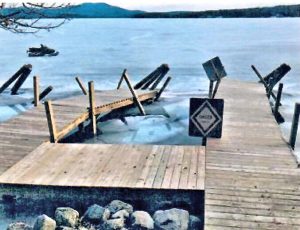
During the winter months, the ice expands and moves around. If a dock is frozen in the ice, it is likely to be damaged. If the water levels are low, and the ice rises due to rain and inflow, then pilings can be pulled out of the lake bottom. It is this combination of factors which causes the ‘ski jump’ type damage often seen on piling docks in the spring. The goal with de-icing is to open-up just enough water to keep structures disconnected from the ice sheet, but only enough to accomplish this separation.
It’s important to understand that a de-icer only prevents ice damage due to freezing expansion and water level changes. A de-icer does not protect a structure from large ice floes moving randomly around in the spring. Spring floe ice is best counteracted with ice protection pilings or by removing a dock. Some areas of our lakes are more regularly susceptible to ice floe damage from year to year. Of course, ‘ice out’ and the thawing process is not an exact science, so almost any structure can be at risk from ice floes.
Years ago, and this is the origin of the words ‘bubbler’ and ‘aerator,’ small air compressor pumps were used on docks during the freezing months and a garden hose-like pipe was wound around the structure, resting on the lake bottom. The air flow through the hose, which had numerous pin-holes along its length, allowed air bubbles to escape and race to the surface, bringing up warm water and causing weak spots or open water in the ice at the surface. These compressors ran non-stop and were relatively noisy. Neighbors were typically unhappy with the cumulative noise and often a cover was constructed to make them quieter. Covers could cause units to overheat and fail and, once the ice refroze, it was usually impossible to restore open water. One advantage of this type of unit was the relatively small amount of open water at the surface; however, as they ran constantly, they were not energy efficient.
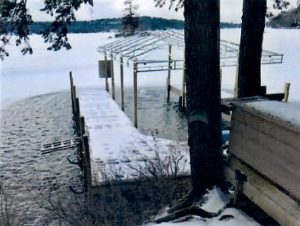
Most people today are probably more familiar with the propeller-type aerator units. These can be floating, hanging, bottom mounted, or dock mounted. These types of units can open an incredible amount of ice, if run constantly. These work by bringing relatively warm water up from the bottom and pushing it around the docks via the spinning propeller.
So, the question everyone asks is: what will work best for me? Unfortunately, there is no easy or correct answer. Each site is affected by freezing ice differently and one must consider a number of factors, such as, winter uses, sun exposure, currents, depth contours, prevailing winds, and other site specific factors to maximize efficiency and minimize too much open water. Do you like to snowmobile, ice fish, or skate and need safe access to the ice? Do you have a long dock, wide dock, or a special shorefront consideration? Are you around in the winter to monitor the ice? All these factors must be considered in choosing your best alternative.
We suggest having someone available to monitor your ice protection gear and starting out with either a bottom mount circulator in shallow water and a hanging unit in deeper water. By actively managing the circulators during the changing season, you can control the amount of open water and electricity used. Using a timer and a thermostat will allow you to accurately regulate the open water around your dock. Every site is unique. Through some simple experimentation and intelligent management of your ice protection gear, you can custom tune de-icing to your specific conditions without stirring up sediment or undermining structures. You will save a considerable amount of electricity and reduce the amount of open water around your shoreline structures, too!
BE ADVISED: If you operate a de-icing unit…Effective July 14, 2019, the New Hampshire Legislature passed House Bill 668 which amended RSA 270:33. This amendment restricts the placement and operation of “aquatherms” to limit open water to directly in front of a lakefront owner’s property. Additionally, “THIN ICE” signs must be visible from ALL directions approaching the area, which means a minimum of three signs, arranged in a triangle so as to be visible from all angles. As in the past, all shoreline de-icing equipment operation requires registration with the New Hampshire Department of Safety under RSA 270:34. Registration forms are available from your local Town or City Clerk for $0.50.
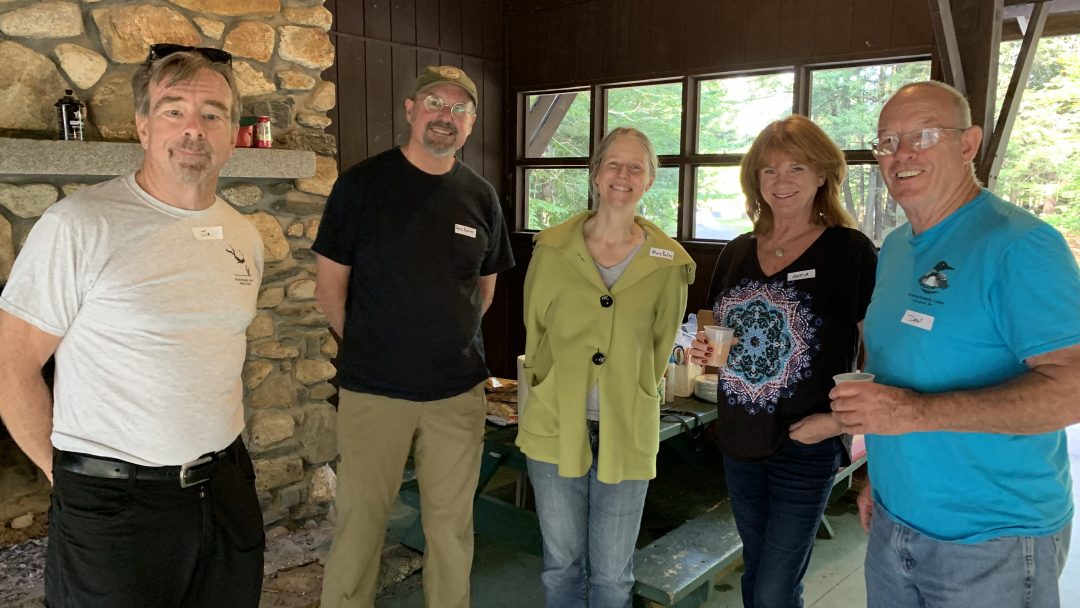
“Volunteers don’t get paid; not because they’re worthless, but because they’re priceless”.

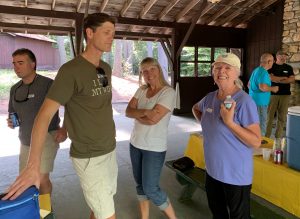

September 15, 2019 was truly a lovely Sunday afternoon in the Park; the perfect setting for a gathering of PLIA volunteers. Every fall the PLIA hosts a cookout at the Pawtuckaway State Park Pavilion to thank and celebrate its volunteers.
 This year, President Tom Duffy recognized the hard work and tireless dedication of the folks who inspect boats in the Lake Host Program, look for invasive species in the WeedWatchers, gather lake and tributary water samples in the Water Testing program, search for and root out milfoil in the Milfoil Patrol, and pick up trash on Route 156 in the Clean and Scenic Road Cleanup Program. He also gave a shout out to the volunteers who run the organization, all year long.
This year, President Tom Duffy recognized the hard work and tireless dedication of the folks who inspect boats in the Lake Host Program, look for invasive species in the WeedWatchers, gather lake and tributary water samples in the Water Testing program, search for and root out milfoil in the Milfoil Patrol, and pick up trash on Route 156 in the Clean and Scenic Road Cleanup Program. He also gave a shout out to the volunteers who run the organization, all year long.
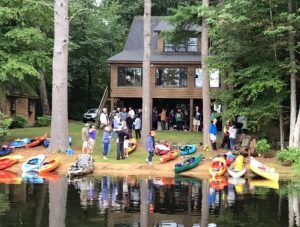 Finally, Tom announced a very successful fund raising event that took place on Saturday, September 14, known as Paddle Poker. It was put together with the enthusiasm, energy, and dedication of a well-coordinated group of volunteers. And participants had loads of fun!
Finally, Tom announced a very successful fund raising event that took place on Saturday, September 14, known as Paddle Poker. It was put together with the enthusiasm, energy, and dedication of a well-coordinated group of volunteers. And participants had loads of fun!
 The PLIA appreciates that it could not not survive, and that none of its programs could operate, without the generous and spirited contributions of its volunteers. Everyone who treasures Pawtuckaway owes a debt of gratitude to these folks. Their hard work keeps the lake clean and healthy for all of us to enjoy! So, the next time you meet one of these special people, give them a big THANK YOU!
The PLIA appreciates that it could not not survive, and that none of its programs could operate, without the generous and spirited contributions of its volunteers. Everyone who treasures Pawtuckaway owes a debt of gratitude to these folks. Their hard work keeps the lake clean and healthy for all of us to enjoy! So, the next time you meet one of these special people, give them a big THANK YOU!
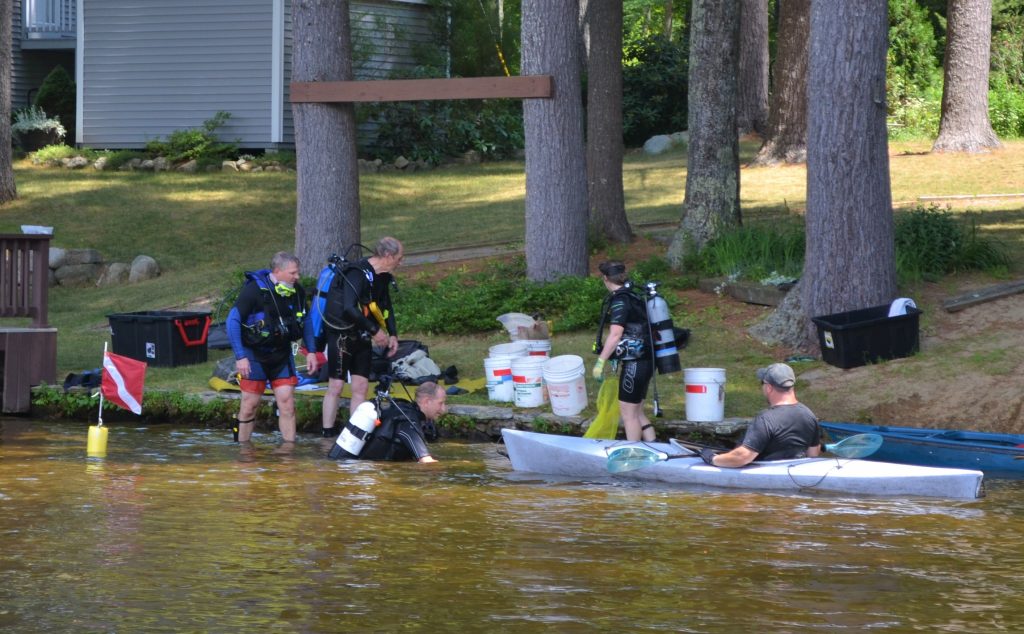 On Saturday July 6th, three open water certified SCUBA divers were trained and certified in exotic milfoil weed removal. We now have FOUR Pawtuckaway divers to remove milfoil when we find it!
On Saturday July 6th, three open water certified SCUBA divers were trained and certified in exotic milfoil weed removal. We now have FOUR Pawtuckaway divers to remove milfoil when we find it!
FINDING the new growths of variable milfoil is the hard part of this important work. Our team of snorkelers has been working overtime in search of new plants and growths. Once plants are found and identified, they are marked with floating markers. Then the divers know where to find the plants for removal.
In addition, we trained three topside “tenders” in kayaks who assist the divers to maximize their underwater time for search and removal. We need to train more of these topside tenders to protect the divers and snorkel search teams from wayward boaters, keep them supplied with tools and materials, and cart off the removed plants. It’s a big job! In the photo below you will note the “diver down” flags strategically placed to indicate where divers are located.
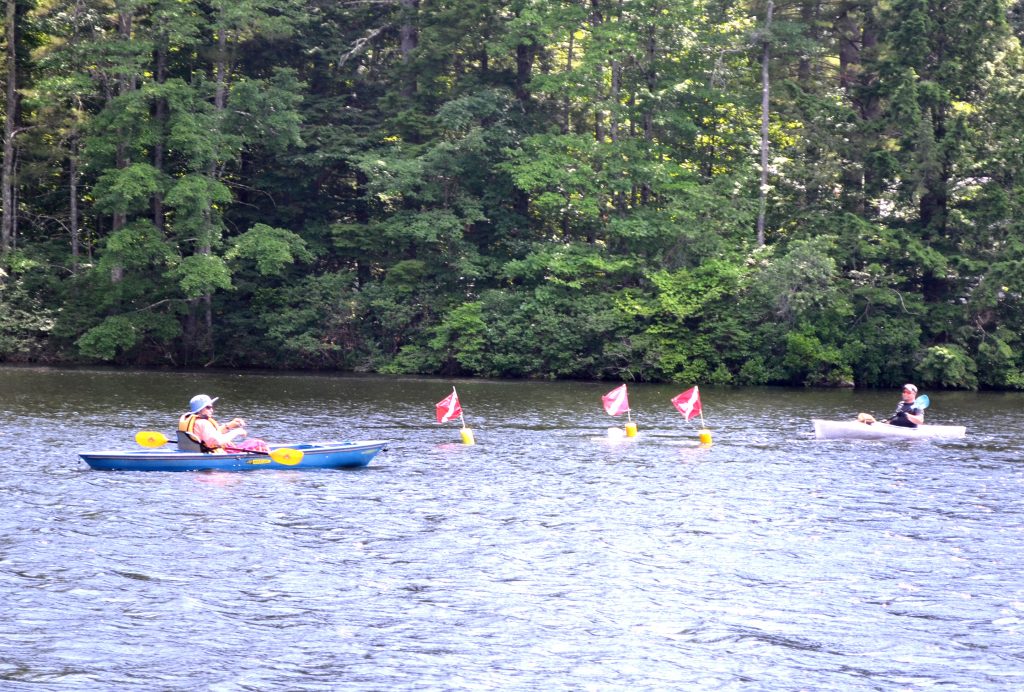
In the last week we have logged over 60 hours in volunteer time on this most important mission.
Special thanks to Ted Aldrich (weedcontroldiver@gmail.com) who made the trip from Keene to train our volunteers for an 8 hour day!
Thanks to all our members who support our Lake Host and Weed Control Programs with your higher level dues donations. It helps our reimbursement for materials, supplies, and training.
If you are interested in these volunteer activities, please contact us at Info@PawtucawayLake.com.